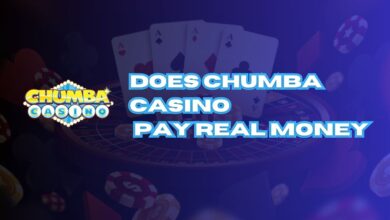Learn the Blackjack Chart and Boost Your Winning Odds

If you want to maximize your chances of winning in blackjack, mastering the blackjack chart is essential. The blackjack chart provides strategic advice on whether to hit, stand, split, or double down based on your hand and the dealer’s upcard. By relying on mathematically proven strategies, you can minimize the house edge and give yourself the best possible chance to win. In this comprehensive guide, we will walk you through how to use the blackjack chart, the significance of card values, and key tips to help you stay ahead at the blackjack table.
What is a Blackjack Chart?
A blackjack chart is a visual representation of the optimal moves you should make in any given scenario in blackjack. It breaks down each possible hand combination, helping you make informed decisions based on probability. Whether you are a beginner or an experienced player, the blackjack chart serves as a vital tool to minimize the house’s advantage and increase your odds of winning.
Understanding Basic Blackjack Strategy
The blackjack chart is built on basic strategy principles that cover several scenarios:
- Hard hands (a hand without an Ace or with an Ace valued at 1)
- Soft hands (a hand with an Ace valued at 11)
- Pairs (two cards of the same rank)
Each scenario requires different decisions based on the dealer’s upcard and your own cards.
How to Use a Blackjack Chart Effectively
Using a blackjack chart is straightforward, but it requires consistency and attention to detail. To apply the chart, follow these steps:
- Identify your hand type: Determine whether you have a hard hand, soft hand, or a pair.
- Compare with the dealer’s upcard: Look at the dealer’s visible card and match it with your hand combination on the chart.
- Follow the chart’s recommendation: Whether the chart advises you to hit, stand, double down, or split, you should stick to it.
By adhering to the recommendations on the blackjack chart, you can make decisions based on probability rather than guesswork.
Example: When to Hit or Stand
If you have a hard hand with a total of 16, and the dealer’s upcard is a 10, the blackjack chart suggests hitting because the probability of the dealer having a strong hand is high. Conversely, if the dealer has a 6, the chart recommends standing, as the dealer has a higher chance of busting.
The Importance of Knowing Card Values in Blackjack
To fully utilize a blackjack chart, you need to understand card values. In blackjack:
- Number cards (2 through 10) are valued at their face value.
- Face cards (Kings, Queens, Jacks) are worth 10.
- Aces can be worth 1 or 11, depending on what benefits your hand the most.
Knowing these values is critical for interpreting the blackjack chart and making the best possible moves.
Blackjack Chart Scenarios: Breaking Down the Key Moves
Hard Hands
A hard hand is a hand that either doesn’t contain an Ace or where the Ace is only valued at 1. When you have a hard hand, your decisions will largely be influenced by the dealer’s upcard.
- Hard 12-16: These hands are tricky because they are close to busting. If the dealer shows a 2-6, the blackjack chart generally advises you to stand, as the dealer has a higher chance of busting. However, if the dealer shows a 7-10 or an Ace, you should hit.
- Hard 17 or higher: Stand in most cases, as you have a high chance of winning without taking further risks.
Soft Hands
A soft hand contains an Ace that can be valued at 11. These hands give you more flexibility since the Ace can be revalued to avoid busting.
- Soft 13-17: If the dealer shows a low card (2-6), the blackjack chart suggests doubling down. If the dealer has a 7 or higher, you should hit.
- Soft 18 or higher: Stand in most cases, as these hands are already strong.
Pair Splitting
Splitting allows you to turn a pair into two separate hands, giving you more opportunities to win.
- Split Aces and 8s: Always split these pairs. Splitting Aces maximizes your chances of getting a strong hand (two hands with an Ace), while splitting 8s helps you avoid a difficult hand total of 16.
- Avoid splitting 5s and 10s: You should keep these as one hand. Two 5s (a total of 10) gives you a good chance to double down, while two 10s (a total of 20) is already a strong hand.
Common Mistakes to Avoid When Using a Blackjack Chart
While the blackjack chart is a powerful tool, it’s crucial to avoid common pitfalls:
- Ignoring the chart: Stick to the chart’s recommendations, even when your intuition tells you otherwise. The chart is based on probability, and deviating from it often leads to worse results.
- Misreading the chart: Make sure you accurately compare your hand with the dealer’s upcard. A small mistake can cost you the game.
- Failing to adapt: Remember that the blackjack chart assumes you’re playing with standard rules. If you’re in a game with different house rules (e.g., the dealer hits on soft 17), adjust accordingly.
Advanced Strategies Beyond the Blackjack Chart
Once you’ve mastered the blackjack chart, you can incorporate advanced techniques like card counting and shuffle tracking to further reduce the house edge.
- Card Counting: By keeping track of the cards that have been dealt, you can adjust your bets and strategies based on the likelihood of certain cards being dealt in the future.
- Shuffle Tracking: This method involves keeping track of how the cards are shuffled to predict future hands.
These advanced strategies are often used by professional players to gain an edge over the house, but they require practice and a deep understanding of the game.
Final Thoughts on Mastering the Blackjack Chart
Mastering the blackjack chart is one of the most effective ways to boost your chances of success at the blackjack table. By understanding card values, following the chart’s recommendations, and avoiding common mistakes, you can greatly improve your game. Consistency and discipline are key when using a blackjack chart. If you combine this knowledge with advanced strategies, you’ll be well on your way to becoming a skilled blackjack player.




